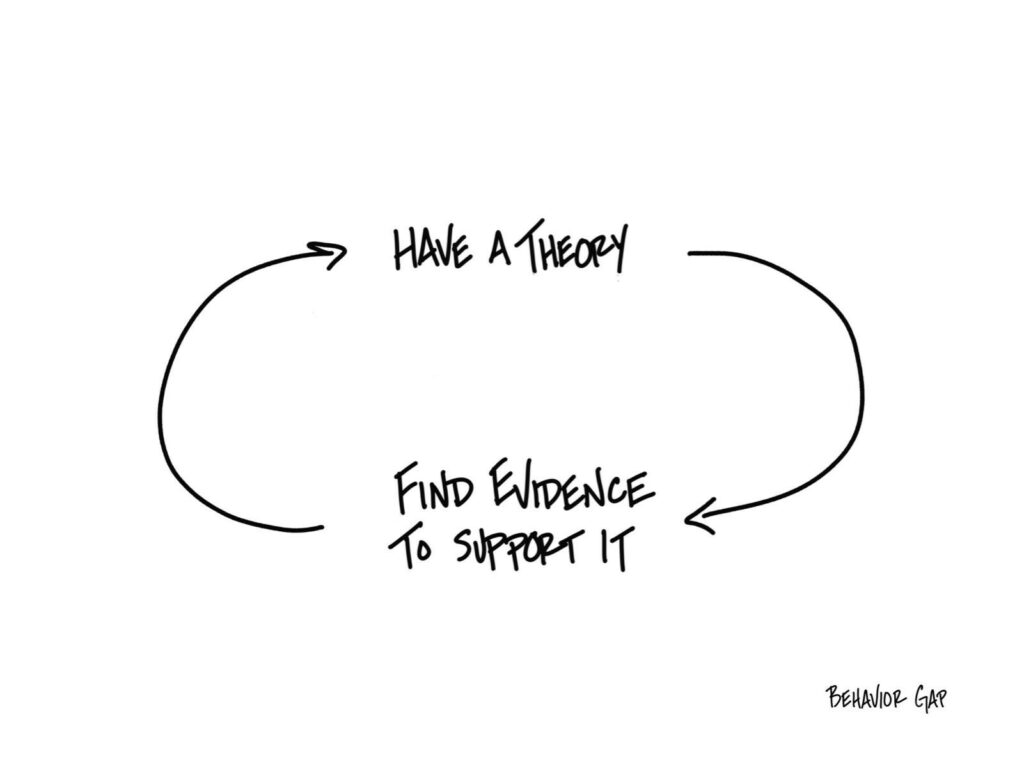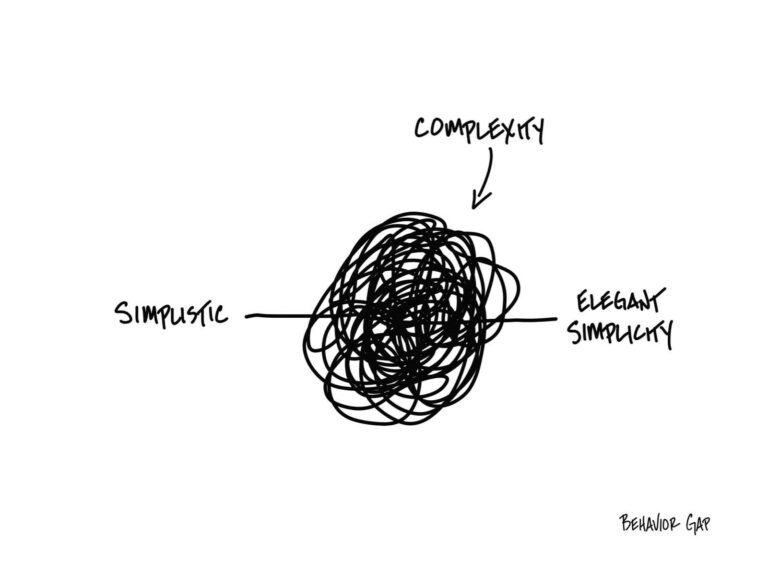
Carl Richards is a Certified Financial Planner™ and creator of the Sketch Guy column, appearing weekly in The New York Times since 2010. The following article is reproduced with permission from his weekly newsletter and his website can be found here.
Greetings, Carl here.
Humans make decisions first and then do their research. That’s backward.
For years, I didn’t even know I was doing this. Every time I had an idea for a new creative project, I’d run it past my friend Jason. I would gather evidence to prove how great it would be, and then I would call Jason to have him confirm it. Which he did, every time I called. After repeating that process countless times, and having many of those projects fail, one day, my wife asked me when I was going to stop calling Jason.
Of course, my wife was right. In fact, there’s even a name for this behavior. It’s called Confirmation Bias—the process of making a decision, then gathering evidence that supports what you’ve already decided, and summarily dismissing anything that disagrees with you. It’s a pretty dumb way to operate.
The tricky bit is how hard it is to break this behavior pattern. But I have found one thing that seems to help. I call it the Confirmation Bias Prevention Program. Here’s how it works:
1- Find someone who disagrees with a decision you’re about to make (an anti-Jason).
2- Ask them why they disagree with you.
3- Carefully listen to what they have to say.
4- Continue listening until you can honestly say, “I understand why you believe that.”
The Confirmation Bias Prevention Program isn’t an ironclad guarantee that you won’t fall into this trap. But what I’ve noticed is that it does seem to provide me the space to consider the possibility that I might be wrong, and every once in a while, that realization stops me from making a costly mistake.
-Carl
P.S. As always, if you want to use this sketch, you can buy it here.


